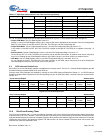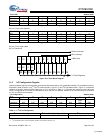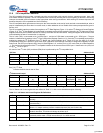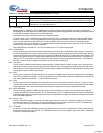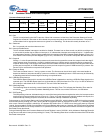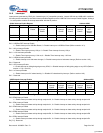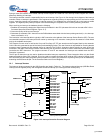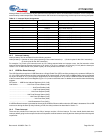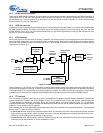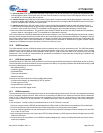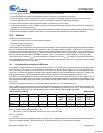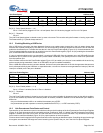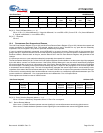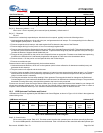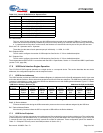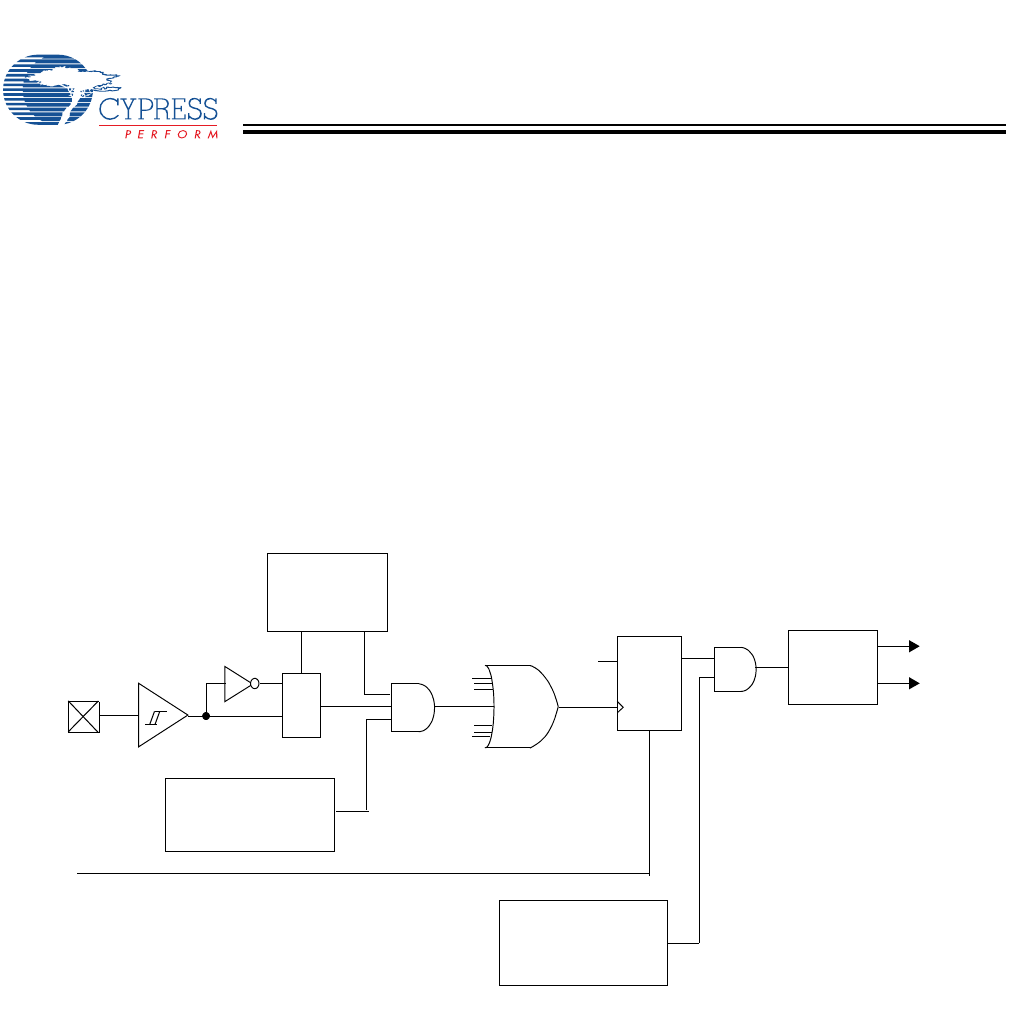
CY7C65113C
Document #: 38-08002 Rev. *D Page 27 of 49
14.5 USB Endpoint Interrupts
There are five USB endpoint interrupts, one per endpoint. A USB endpoint interrupt is generated after the USB host writes to a
USB endpoint FIFO or after the USB controller sends a packet to the USB host. The interrupt is generated on the last packet of
the transaction (e.g., on the host’s ACK on an IN transfer, or on the device ACK on an OUT transfer). If no ACK is received during
an IN transaction, no interrupt is generated.
14.6 USB Hub Interrupt
A USB hub interrupt is generated by the hardware after a connect/disconnect change, babble, or a resume event is detected by
the USB repeater hardware. The babble and resume events are additionally gated by the corresponding bits of the Hub Port
Enable Register (Figure 16-3). The connect/disconnect event on a port does not generate an interrupt if the SIE does not drive
the port (i.e., the port is being forced).
14.7 GPIO Interrupt
Each of the GPIO pins can generate an interrupt, if enabled. The interrupt polarity can be programmed for each GPIO port as
part of the GPIO configuration. All of the GPIO pins share a single interrupt vector, which means the firmware needs to read the
GPIO ports with enabled interrupts to determine which pin or pins caused an interrupt. A block diagram of the GPIO interrupt
logic is shown in Figure 14-4.
.
Refer to Sections 9.1 and 9.2 for more information of setting GPIO interrupt polarity and enabling individual GPIO interrupts. If
one port pin has triggered an interrupt, no other port pins can cause a GPIO interrupt until that port pin has returned to its inactive
(non-trigger) state or its corresponding port interrupt enable bit is cleared. The USB Controller does not assign interrupt priority
to different port pins and the Port Interrupt Enable Registers are not cleared during the interrupt acknowledge process.
14.8 I
2
C Interrupt
The I
2
C interrupt occurs after various events on the I
2
C-compatible bus to signal the need for firmware interaction. This generally
involves reading the I
2
C Status and Control Register (Figure 12-2) to determine the cause of the interrupt, loading/reading the
I
2
C Data Register as appropriate, and finally writing the Processor Status and Control Register (Figure 13-1) to initiate the
subsequent transaction. The interrupt indicates that status bits are stable and it is safe to read and write the I
2
C registers. Refer
to Section 12.0 for details on the I
2
C registers.
When enabled, the I
2
C-compatible state machines generate interrupts on completion of the following conditions. The referenced
bits are in the I
2
C Status and Control Register.
1. In slave receive mode, after the slave receives a byte of data: The Addr bit is set, if this is the first byte since a start or restart
signal was sent by the external master. Firmware must read or write the data register as necessary, then set the ACK, Xmit
MODE, and Continue/Busy bits appropriately for the next byte.
2. In slave receive mode, after a stop bit is detected: The Received Stop bit is set, if the stop bit follows a slave receive transaction
where the ACK bit was cleared to 0, no stop bit detection occurs.
Figure 14-4. GPIO Interrupt Structure
Port
Register
OR Gate
GPIO Interrupt
Flip Flop
CLR
GPIO
Pin
1 = Enable
0 = Disable
Port Interrupt
Enable Register
1 = Enable
0 = Disable
Interrupt
Priority
Encoder
IRQout
Interrupt
Vector
D
Q
M
U
X
1
(1 input per
GPIO pin)
Global
GPIO Interrupt
Enable
(Bit 5, Register 0x20)
IRA
Configuration
[+] Feedback



